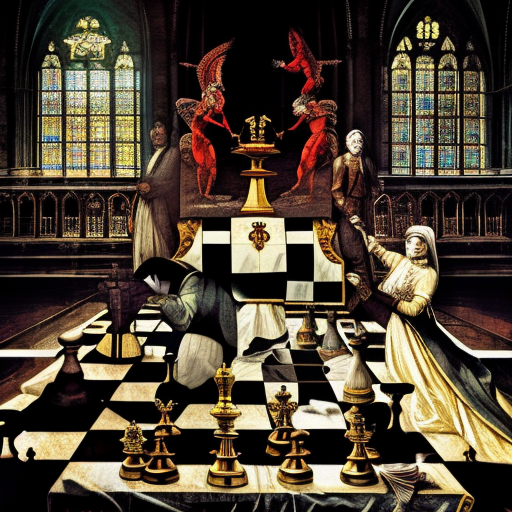Summary:
In “The Flanders Panel” by Arturo Pérez-Reverte, a renowned art restorer named Julia is tasked with conserving a 15th-century painting called “The Game of Chess.” As she works on the painting, she discovers a hidden inscription that leads her to investigate a centuries-old murder mystery. Through a series of clues and historical research, Julia unravels the secrets of the painting and uncovers a shocking truth that connects the past with the present.
The Game of Chess:
“The Flanders Panel” centers around a 15th-century painting called “The Game of Chess” by Pieter Van Huys. The painting depicts two men playing chess, surrounded by onlookers. As Julia begins her restoration work, she notices a hidden inscription that reads, “Who killed the knight?” Intrigued by this cryptic message, she embarks on a quest to unravel the mystery behind the painting.
The Historical Puzzle:
As Julia delves deeper into the history of “The Game of Chess,” she discovers that the painting holds clues to a centuries-old murder. Through her meticulous research and analysis, she uncovers a web of deceit, betrayal, and hidden identities. The story takes readers on a journey through different time periods, from the 15th century to the present day, as Julia pieces together the puzzle and uncovers the truth.
An Unlikely Alliance:
Throughout her investigation, Julia forms an unlikely alliance with a chess expert and a private detective. Together, they work to solve the mystery behind the painting and unravel the secrets of the past. As they delve deeper into the case, they encounter danger and face unexpected twists and turns. The trio must navigate through a complex web of clues and historical references to uncover the truth before it’s too late.
Key Takeaways:
- The power of art: “The Flanders Panel” explores the idea that art can hold hidden messages and secrets that transcend time.
- The importance of collaboration: Julia’s journey to solve the mystery behind the painting highlights the value of teamwork and the exchange of knowledge and expertise.
- The impact of history: The novel demonstrates how the past can have a profound influence on the present and how historical events can shape the lives of individuals.
“The Game of Chess is a mirror of life, a metaphor for war, a lesson in strategy and tactics, a reflection of society and the world in which we live.”
– Arturo Pérez-Reverte
In “The Flanders Panel,” Arturo Pérez-Reverte weaves together art, history, and mystery to create a captivating tale. Through the exploration of a centuries-old painting, the novel delves into themes of love, betrayal, and the enduring power of art. With its intricate plot and well-developed characters, “The Flanders Panel” keeps readers guessing until the very end. It serves as a reminder that the past is never truly forgotten and that the secrets of history can still have a profound impact on the present.












